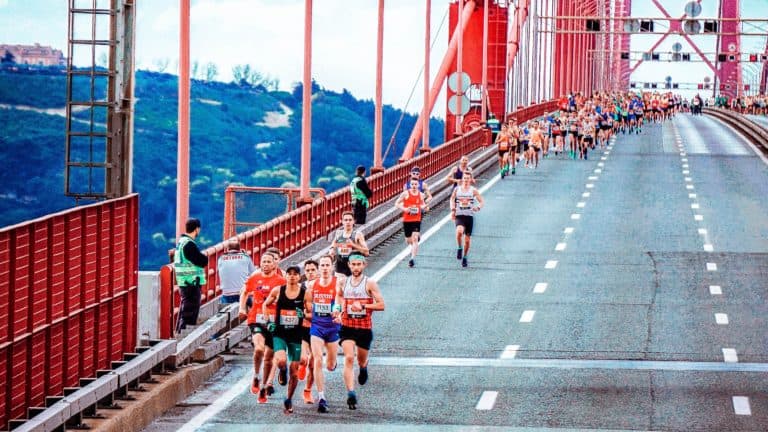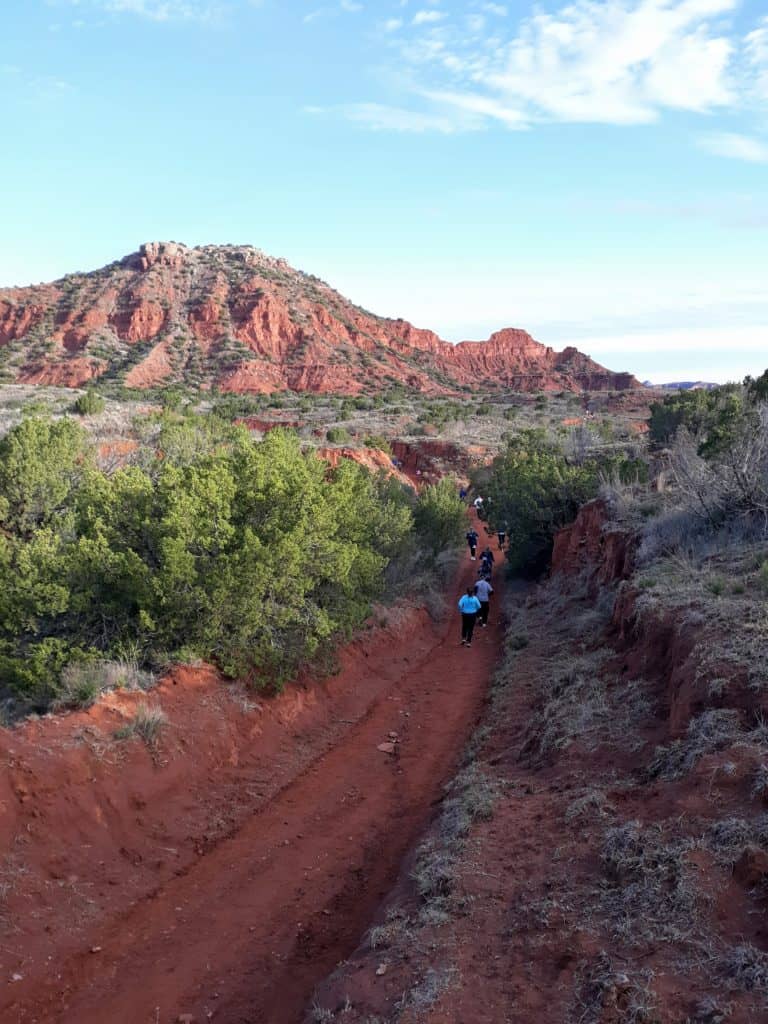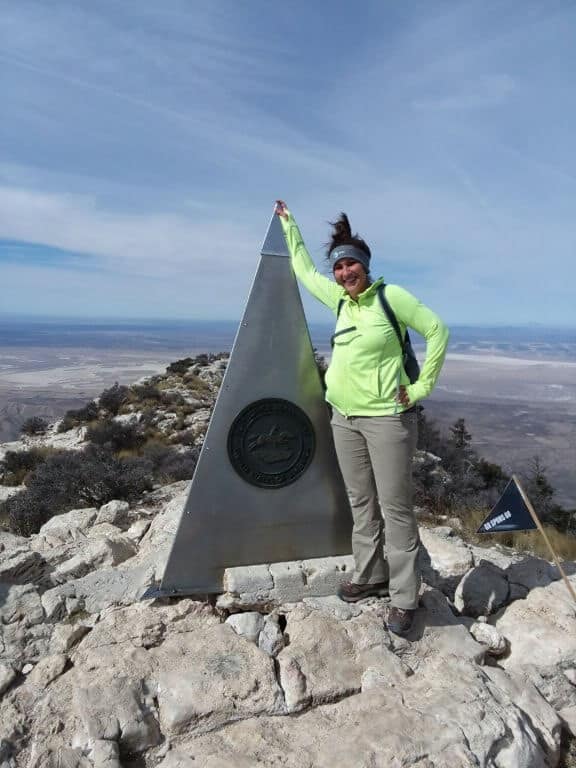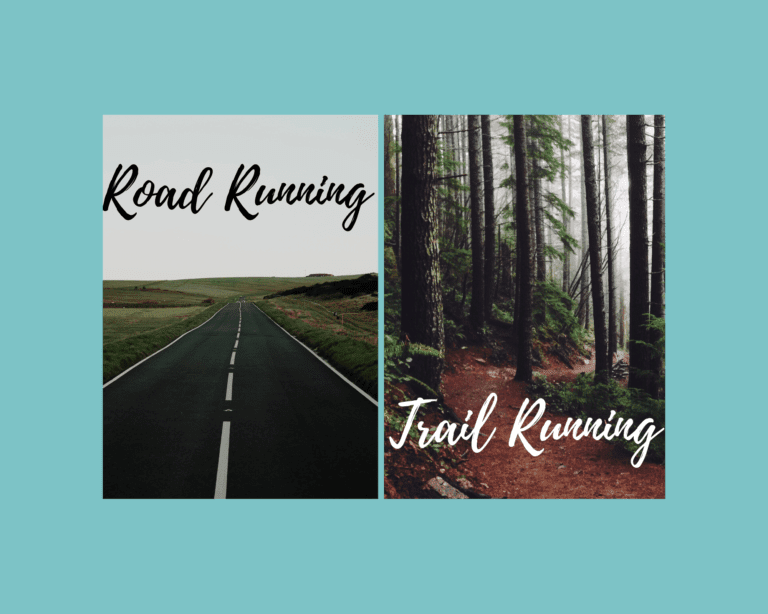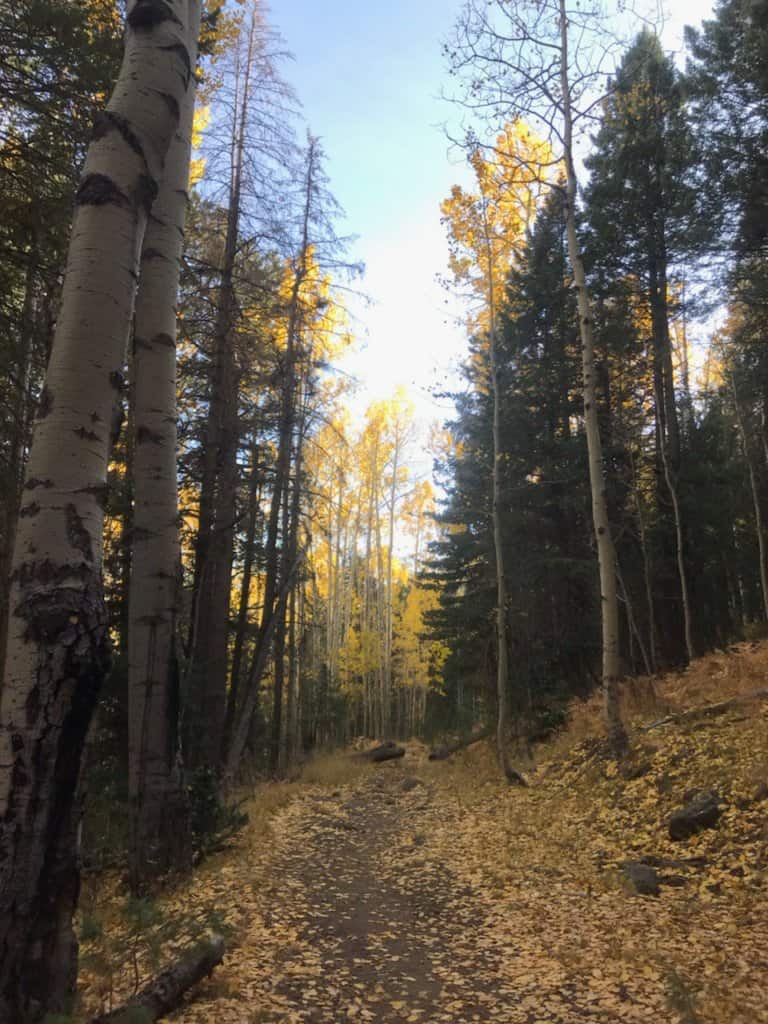Backpacking For Beginners Step by Step Guide
Ready for your first backpacking trip? Maybe you’ve day hiked for years and want to branch out into overnight backpacking. Maybe you want to develop your backcountry self sufficiency skills. Maybe you want to enjoy a new activity with family or friends. Maybe you just want to get away from it all or challenge yourself in a new way. Whatever the reasoning, backpacking for the first time can be thrilling, but also intimidating. After all, you’re intentionally removing yourself from civilization to live for a night (or more) in seclusion. If this sounds like your idea of a good time, you’re in the right place! But beginner backpacking trips need to be planned carefully and responsibly, in order to have the safest and most enjoyable trip! Follow this complete guide to backpacking for beginners to learn what beginner backpacking gear to bring, how to choose your trail, what to do during your hike, how to set up camp, and many more beginner backpacking tips!
Disclosure: Below are some affiliate links-these are all products I highly recommend. I won’t make any recommendations on this page that I haven’t tested or personally used! Enjoy this backpacking for beginners guide!
Table of Contents
The Complete Backpacking for Beginners Guide
For many, backpacking is the ultimate outdoor escape. The best way to see the more remote areas of the world, or a way to escape the hustle and bustle. For others, it is a test in self sufficiently and self endurance, and a great way to learn new skills and problem solve. Whatever your reasoning for getting into backpacking, it can also be quite intimidating as a newbie. You are literally removing yourself from civilization and preparing to survive in that situation. There is a LOT to do to prepare, and a LOT to remember before setting off. If you are feeling a bit stressed with knowing where to start, this backpacking for beginners guide will walk you step by step through the process. Learn everything you need to know, in a logical, simple way, in order to be fully prepared for a safe and responsible beginner backpacking trip!
Day Hiking VS Backpacking: What’s the Difference?
Day hiking is a great place to start before your first backpacking trip. Day hiking means hiking within one day. It does NOT involve overnight camping.
Backpacking is in many ways a progression from day hiking. It utilizes most of the same skills used during day hiking, plus some extras like fire starting, setting up camp, shelter, etc. Backpacking involves camping overnight along the trail for at least 1 night, but often longer. Backpacking is more immersive and often more secluded.
Which is right for you? Here’s where it’s important to be honest with yourself. If you are a beginner backpacker, day hiking is a great place to start to get used to the concepts of trail familiarity, route finding, gear knowledge, physical readiness, and proper fueling. Self sufficient backpacking, removed from civilization, should be done with the correct preparation. Even so, things can still go wrong, so having a solid foundation of being out in the wilderness just on longer day hikes is a great base.
Once you’ve gotten a handful of good day hikes under your belt (and maybe even problem solved a few good hiccups along the way), you’ll be better prepared to branch out into a full backpacking trip. If you have intentions of backpacking, treat your day hikes in the meantime as practice runs – test out your gear, test out which foods you like, test out which apps or maps you prefer, etc.

BEFORE Your First Backpacking Trip
- Get all essential beginner backpacking gear (more details on this later – but you can download this handy checklist NOW)
- Choose an easy, more familiar destination – choose an easier, shorter trail close to home in an area you might be more familiar with. Water nearby also makes things easier. Bonus points if you have day hiked in the area before and gotten to know the lay of the land that way. Consider state parks or other wilderness bodies that may have a “walk in” campground that is only a mile or so in.
- Choose a more developed / trafficked trail and campsite – it can be good to have others around for your first backpacking trip in case of a hiccup.
- Pick a “friendlier” time of year – plan your first backpacking trip during a more moderate season (avoid extremes in conditions like intense heat, extreme cold, monsoon season, etc.)
- Familiarize yourself with the trail and campsite – study trail maps, know landmarks, read reviews, etc.
- Pick novice backpackers’ brains – if you have a friend or family member who is an experienced backpacker, pick their brains. Better yet, invite them to join you on your first backpacking trip!
- Choose hiking partners – speaking of who to invite, give some thought to aligning preferences, abilities, and skillsets intentionally. Make sure everyone has prepared similarly, tested out their gear, and is in sufficient and similar physical readiness. If one partner wants to hike 1 mph, and the other wants to hike at a 3 mph pace, there might be some frustrations. Be honest with each other when discussing your expectations. Hold each other accountable to prepare.
- Test out your gear – to make sure tents don’t have holes, stoves lights, etc. Check for glitches, but also make sure you know HOW to use your gear before your first outing.
- Plan out your meals – make sure you bring healthy hiking snacks for the hiking part of your backpacking trip, plus compact, lightweight, minimal waste, and easy to cook backpacking meals.
- Take care of logistics – do you need a permit? Is the trailhead only accessible by 4 wheel drive? Are campfires allowed? Are there other specific local rules to follow? These are examples of a few questions to know the answers to.
- Always check the weather before leaving, and avoid inclement weather – for mountain specific weather check mountain-forecast.com, as weather on a summit can be drastically different than weather at the base.
CHECK OUT: the Top 10 Hikes in the U.S. that Require a Permit
- Use a Hiking Safety Contact Form – be sure to leave a trip plan with a family member or friend, and also consider using a safety contact form like this one that you can leave in the console or glove compartment of your box. This can help expedite emergency services in a worst case scenario, especially in more remote wilderness areas.
- Give yourself time – don’t wait until the week before to start training, or to buy your beginner backpacking gear, or to work on figuring out logistics. Plus, you don’t want to miss something because you are stressed or rushed and accidentally overlook a planning component.
- Get physically ready – condition yourself for your backpacking trip by replicating your upcoming backpacking trip with practice training hikes. Bonus if you do your practice hikes with a similarly loaded backpack.
- Hike similar distances – ideally with the pack and gear you plan to use on your actual backpacking trip.
- Fuel on the snacks and foods you plan to bring on your backpacking trip. Know what works (and what doesn’t) for you. Not everything will agree with your stomach when backpacking.
- Train further in advance – if your backpacking trip is a more difficult rated trail with more elevation gain, distance, or environmental elements like extreme heat, no shade, etc.
CHECK OUT: 6 Hiking Exercises You Can Do No Matter Where You Live

What Beginner Backpacking Skills Do I Need?
- How to Choose the Right Trail
- How to Handle Interactions with Wildlife
- How to Go to the Bathroom
- How to Leave No Trace
- How to Navigate
- How to Use and Setup Gear
- How to Care for Gear
#1: How to Choose the Right Trail
In the case of backpacking for beginners, choosing the right trail needs to be done with intentional thought. There are a lot of components that go into a successful beginner backpacking trip, some in your control, and others out of your control. Choosing a trail conducive for you is within your control.
- Look for a trail that is closer to home, perhaps even one you have hiked on before or near to.
- Choose an easier trail, with less elevation gain, a shorter distance, and easier environmental factors like more shade, etc.
- Choose a more trafficked trail with a more developed campsite
- Choose a trail with water availability
- Choose a trail with less potential obstacles – wildlife like bears, larger stream crossings, trails with scrambles or bouldering, etc.
#2: How to Handle Interactions with Wildlife
When it comes to wildlife, being proactive goes a long way. As mentioned above, I would recommend against backpacking for the first time in areas with a higher risk for more “wildlife”, like grizzly bears, mountain lions, etc. However, if you don’t have a choice, learn how to respond to various wildlife encounters, as well as how to set up your camp to proactively help repel wildlife encounters (bear canisters, stuff sacks, leaving no trace, proper storage of food, cleaning cookware, etc.). Even small animals like mice and chipmunks can create havoc attempting to get your food.
#3: How to Go to the Bathroom When Backpacking
Sometimes an awkward topic when it comes to backpacking for beginners, but it must be addressed! After all, Leave No Trace involves how to properly go to the bathroom when backpacking.
- First of all, bring a trowel (you’ll see this on your complete backpacking for beginners checklist) if you plan to dig and bury for #2’s. Toilet paper is also recommended, though some die hards like to go with non-poisonous leaves. Dig a hole about 4 inches wide and at least 6 inches deep for waste. Cover it with dirt and rocks after use. Larger rocks are especially helpful to discourage digging critters. Bring a Ziploc bag to pack out used toilet paper.
- If you are planning to be in camp for several days, it is sometimes helpful to “mark” used spots with a stick placed in the ground to avoid disturbance.
- Know if there are any local regulations that require you to pack out solid waste. This is common in some fragile wilderness areas. For this situation you can use a Wag Bag type setup.
- Don’t do your business in camp, near the trail, or especially right by water sources.
#4: How to Leave No Trace
Going to the bathroom properly has already been discussed above in #3, but there is more to knowing how to Leave No Trace. In fact, there are 7 key principles:
- Plan Ahead and Prepare – know the local rules, prepare for weather, emergencies, and hazards, and know your navigation tools.
- Travel and Camp on Durable Surfaces – stay on established trails, do not alter campsites, and camp at least 200 feet from bodies of water.
- Dispose of Waste Properly – basically, pack it in pack it out. Go to the bathroom properly. Use biodegradable soap for dishwashing, and never dump dishwater directly into another body of water.
- Leave What You Find – don’t touch historical structures or artifacts found on the trail. Do not add structures to the trail (digging trenches, etc.). Leave rocks, plants, and other natural objects where you found them, and do not transport these items.
- Minimize Campfire Impacts – always use existing fire rings where fires are allowed, keep fires small, and put out fires completely.
- Respect Wildlife – do not approach or feed wildlife, and always control pets.
- Be Considerate of Others – avoid loud noises, control pets, yield properly, etc.
#5: How to Navigate
Be sure you KNOW how to USE whichever navigation tool you plan to use, whether it be a compass, topographic map, GPS, or downloadable/offline app map. Practice using your navigation tools prior to your first backpacking trip. My favorite app with downloadable/offline maps is AllTrails, although even this app sometimes has the occasional shortcoming, and it is important to know other navigation tools as well. Also, consider using a personal emergency beacon, like the Spot 4, for more remote wilderness areas. And remember, for your first (or first few) backpacking trips, it is recommended to use an easier, more familiar trail and campsite to avoid having to do too much technical route finding.
Insider Tip: following trails through certain areas like forests is often easier due to more “defined” trails between trees. Open, barren areas like deserts can be harder to determine the trail due to washouts, wind, erosion, etc.
#6: How to Use and Set up Your Beginner Backpacking Gear
Before you sleep in a tent for the first time, you’ll want to know how to set it up. This can be easier said than done. And this is just one example, there are lots of intimidating pieces of backpacking gear for first timers. My biggest piece of advice is to do a practice run with all the gear you intend to use on your beginner backpacking trip. Even if this just means setting up in your backyard.
- Set up your tent
- Set up your sleeping pad and bag
- Use your stove to cook actual meals
- Do practice hikes with your pack, shoes, socks, water system, etc.
- Know how to use your filtration system
- Use your navigation system on a practice hike
You get the picture, set up and test out your gear items beforehand. And here’s why – once I was backpacking in the Guadalupe Mountains of Texas, and we arrived to our wilderness campsite moments before it started raining. Not an ideal situation to set up camp in, but thankfully I knew how to get my tent set up quickly because I had practiced beforehand, and was able to avoid a situation where I and my gear got completely soaked.
#7: How to Care for Gear
- The main thing you want to watch for with your beginner backpacking gear is moisture buildup, especially on backpacking gear items like your tent and sleeping bag. Always shake out dirt, and always air dry before storing. Fully set the tent up for air drying. Never stuff a damp tent into storage.
- If your sleeping bag contains down or other synthetic materials, compression can lower the integrity of these fillings. It is recommended to first, make sure your sleeping bag is clean and dry, and then allow it to be stored loosely in a dry, cool place. Don’t forget to allow your sleeping pad to dry completely before storage as well.
- When it comes to caring for other gear items, always follow product recommendations for cleaning and storage. Sometimes this means avoiding the use of harsher household cleaners.
- If you have items with Durable Water Repellant (DWR), like a waterproof outer layer jacket, follow recommended renewal application. How do you know when your DWR needs to be reapplied? If water beads and rolls off, you’re good. If it “absorbs”, your repellant needs to be reapplied to the surface.
- During use, be sure to watch for sharp objects that may damage gear like your tent. Clear a campsite of any large rocks or sharp sticks if necessary before setting up your tent. If you are bringing pets, make sure their claws are as trimmed as possible. Keep camping gear away from fires, and NEVER light a fire or use a propane stove inside a tent.
- Gear Aid or duct tape is a great “fix it” item to bring along on backpacking trips to help with gear emergencies.
- Be proactive in avoiding and repelling wildlife encounters, as some gear damage can occur when animals are trying to access poorly stored food. I’ve witnessed ground squirrels chew straight through backpacks to get to food inside, and raccoons run off with cookware that was left out!

Beginner Backpacking Gear Essentials
Here’s the beginner backpacking essentials you need to have for your first backpacking trip. This is NOT an exhaustive list – you can pin my beginner backpacking gear checklist at the end of these recommendations, or download your own printable beginner backpacking gear checklist HERE!
Below each item of essential beginner backpacking gear you will find links to my recommended products!
BACKPACK (minimum 40 liter internal frame pack) – keep in mind any specific requirements you may have. For example, if you plan to use a water hydration bladder, make sure your pack is compatible. If you like using trekking poles, get a pack that can store trekking poles when not in use. These are just a couple examples. Purchasing a backpack with a rain cover is always recommended. Always try on a backpack before purchasing if possible, to ensure fit and comfort.
- Recommendation: Osprey Backpack Womens / Osprey Backpack Mens
TENT – go for lightweight but durable. Don’t forget to get the tent footprint to go with your tent.
- Recommendation: MSR Hubba Hubba
SLEEPING BAG – consider the type of filling (down, synthetic, etc) and the rating (rated for 20 degrees, 40 degrees, etc). Make sure you choose a sleeping bag that fits your preferences and intended purposes.
- Recommendation: Hyke and Byke 3 Season / Hyke and Byke 4 Season
SLEEPING PAD – while sleeping pads are not an absolute necessity, they sure do make backpacking more comfortable.
- Recommendation: Klymit Sleeping Pad
STOVE – for boiling water and cooking meals.
- Recommendation: Portable Camping Stove (and fuel canister)
WATER TRANSPORT SYSTEM – you can choose between water hydration bladders and water bottles, but be sure to test out whatever you choose. And make sure it can carry adequate amounts of water.
- Recommendation: Platypus 3 Liter Water Hydration Bladder
WATER FILTRATION SYSTEM – You should always have a way to filter or purify water, not only as a backup during the hike itself, but also as a main source in camp. This can mean water purification tablets, a gravity filtration system, or an internal filtration system found in many hard and collapsible water bottles. There’s plenty of good options, find out which one works best for you.
- Recommendations: Lifestraw Water Bottle with Filter / Katadyn BeFree Collapsible Water Bottle with Filter / Sawyer Filter Squeeze / Sawyer Gravity Filter
COOKING SUPPLIES – this includes pots, pans, dishes, cups, and utensils. To keep things simple, I usually carry one cup to cook with and one cup to drink from, and a spork utensil.
- Recommendations: Stanley Nesting 2 Cup Cookset / Spork
FOOTWEAR/LAYERS– this includes:
- Footwear – HOKA One One Speedgoat Trail Runners Womens / HOKA One One Speedgoat Trail Runners Mens / Vasque Breeze GTX Hiking Boots Womens / Vasque Breeze GTX Hiking Boots Mens
- Hiking Socks – Darn Tough Wool Socks
- Baselayers – Icebreaker Merino Wool Womens / Icebreaker Merino Wool Mens
- Midlayers – Icebreaker Quantum III Womens / Icebreaker Quantum III Mens
- Outerlayers – Outdoor Research Illuminate Down Hoody Mens / Outdoor Research Illuminate Down Hoody Womens
- Rainwear – Outdoor Research Helium II Ultralight Jacket Womens / Outdoor Research Helium II Ultralight Jacket Mens
- Hiking Pants – Columbia Anytime Hiking Pant
- Pajamas – Wool Long Johns
Pin to Save for Later, or Download Below!

Download This Beginner Backpacking Checklist HERE!
Beginner Backpacking Foods
Planning and packing meals is a crucial part of backpacking for beginners. Choosing food for a backpacking trip is a fine balancing game. You want to pack foods that will fuel and energize you sufficiently, but you also don’t want to overload your pack with food.
You want to look for foods that:
- Are lightweight
- Easy to cook (just add hot water, etc)
- Provide energy and not empty calories
- Compact and easy to pack
- Contain minimal trash (because you will most likely have to pack it in, pack it out)
What kinds of backpacking foods fit this description? Check out a few of my favorites below:
BREAKFAST IDEAS:
- Instant oatmeal packet with a squeezable peanut butter pouch mixed in
- Tortillas with honey or Nutella
- RX bars
- Dehydrated breakfast meals like Biscuits and Gravy, Eggs and Bacon, or Granola and Fruit.
- Instant coffee or tea
LUNCH IDEAS:
- Tortilla “sandwiches” with peanut butter and jelly or hard cheeses
- Bagel sandwiches with tuna packets
- Classic bread, cheese, and meat sandwich
- Applesauce pouches
- Trail mix
- Carrot sticks
- Beef jerky
DINNER IDEAS:
- Ramen noodles
- Instant potatoes
- Instant pasta
- Instant Mac and Cheese
- Dehydrated meals like Spaghetti with Meat Sauce, Chicken Fried Rice, Fettuccini Alfredo, Pasta Primavera, Pad Thai Chicken, Chicken Teriyaki Rice, Lasagna, or Cheesy Chicken and Broccoli
Don’t forget DESSERT:
Dehydrated desserts like Dark Chocolate Cheesecake!
INSIDER TIP: next time you go through the drive thru, hang on to those little condiment packages of mayonnaise, ketchup, hot sauce, salt, pepper, creamer, etc. They can come in handy for “spicing up” and flavoring your backpacking meals!
CHECK OUT: Get more Backpacking Meal Ideas HERE!

And don’t forget hiking snacks for the hike in and hike out. It is important to fuel somewhere between every hour to hour and a half during a backpacking trip. It is helpful to know what hiking snacks fuel you the best, and how often you need to snack, prior to your backpacking trip on a practice hike. Your hiking snacks should mimic hiking foods in the same way: compact, lightweight, easy to pack, full of energy, minimal trash waste. You can check out this full guide to the best hiking snacks, which include a few of my additional favorites:
- Trail mix / Nuts
- Olives
- Honey Stinger Stroopwafels
- Veggie slices
- Fruit slices
Backpacking for Beginners Tips During Your First Trip
You’ve done your preparation, and now you’re ready to hit the trails. Here’s some beginner backpacking tips to keep in mind MID trip.
- Pay Attention – always be mindful of the weather, obstacles, wildlife, etc. Pay attention to landmarks in the event of getting turned around. Stay on designated trails at all times. Keep track of distance traveled and route finding (an offline or downloadable map can help with this).
- Talk It Out – if you have a concern, voice it to your mates. Make sure that you maintain a comfortable level of confidence. Problem solve together if unexpected situations arise, and keep calm. If the pace is too quick or you need a rest break, say so. Don’t try to “tough it out”. Support others in their needs as well.
- Pace Yourself – have realistic expectations, and honest awareness of your current abilities. Don’t bite off more than you can chew. Don’t get yourself into a situation where you are stuck or even worse, immobile, in an isolated area.
- Have a Map – whether its a downloadable or offline map or a topographic map (make sure you know how to read it), having a map to follow is a great piece of backpacking for beginners advice.
CHECK OUT: 5 Beginner Hiking Mistakes NOT to Make

How to Set up Camp for the First Time
You’ve arrived at your campsite, now what?
- Pitch your tent at least 200 feet from the trail for privacy
- Camp close to water if possible, but at least 200 feet from the actual body of water
- Pitch your tent on level ground and free from obstacles
- Consider protection from the elements – cliff walls, large boulders, etc. can help minimize strong winds or other less appealing elements.
- Lay out your sleeping pad and sleeping bag
- Filter water
- Start a fire (if allowed)
- Make food and refuel
- Relax
- Store food and food prep items – consider a bear canister, bear sack, or bear bag if the area necessitates it. Even smaller animals like chipmunks, mice, and squirrels can wreak havoc trying to get to food, so proper storage is key.
- Dispose of waste properly

What to Do When Things Go Wrong
Honestly, this is more of a “when” situation than an “if” situation. Even with the most intentional preparation, things can go wrong on backpacking trips. Believe me I know, because I faced what is considered one of the worst case backpacking scenarios early in my backpacking career: getting lost overnight. This happened in the very remote wilderness of Utah’s Uinta Wilderness, on a 4 day backpacking trek to Kings Peak, the highest point in the state. And what did I learn?
- Stay calm and come up with a plan
- Take inventory – what do you have, and what do you need?
- Pay attention – look for recognizable landmarks, listen for sounds, etc.
- Make noise – use a safety whistle / signaling mirror tool to help get attention
- Have a plan for water – use backup filter system
- Always hike with all gear essentials
- Leave a contact form like this one in your glove compartment or console to expedite help if needed
- Stay humble – don’t make mistakes due to cockiness or a sense of “invincibility”
- Don’t be overconfident – even the most experienced backpackers make mistakes and encounter situations out of their control
CHECK OUT: the 50 U.S. State High Points
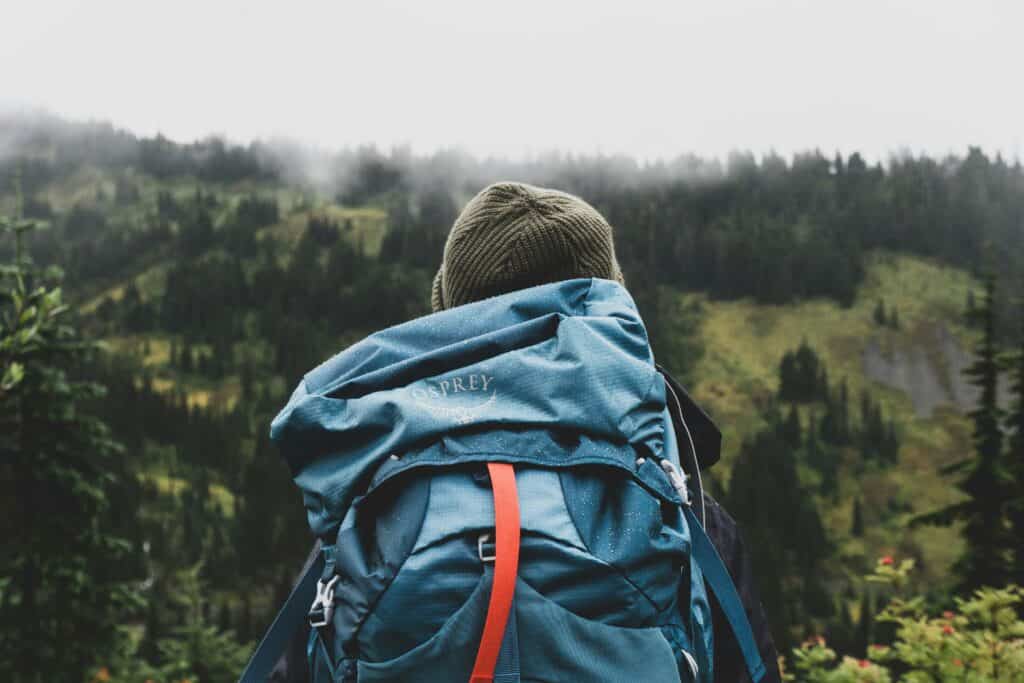
RELATED ARTICLES:
- Day Hiking Gear Essentials Checklist
- The Best Backpacking Meals and Snacks
- The Best Healthy Hiking Snacks
- 5 Beginner Hiking Mistakes NOT to Make
- 6 Hiking Exercises You Can Do No Matter Where You Live
- How to Find a Trail Run Near Me
- National Parks vs National Forests
PIN for LATER!






